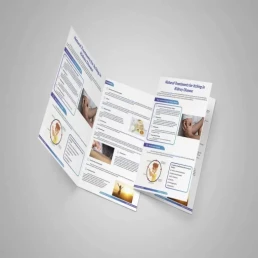Lifestyle modifications are crucial in our integrative approach to kidney health. They are one of the major differences between the conventional and integrative/Functional Medicine approach to halting disease progress. Let’s discuss some of the challenges of adopting lifestyle changes and provide practical tips to help with successful implementation. In this blog, we will talk about some of the basics of physiology and psychology to understand how the brain can implement lifestyle changes. We will discuss the brain and lifestyle changes.
The Efficient Brain
Despite the fact that the brain utilizes approximately 22% of the body’s energy needs, it is quite efficient in many of its processes. The major cells in the brain, called neurons, connect via synapses. For the purpose of this blog, it is easier to think about the brain from an evolutionary standpoint. By doing that, we can divide the brain into the primitive brain (limbic brain and basal ganglia) and the advanced brain (pre-frontal cortex). The primitive brain processes emotion, behavior, motivation, and memory in addition to posture and voluntary movement, while the pre-frontal cortex is involved in critical thinking and learning.
In essence, during the process of learning, the pre-frontal cortex develops the necessary thinking and process to learn a task. After this learning is established and practiced, it becomes automatic and processed at the level of the “primitive brain” without further energy expenditure from the pre-frontal cortex.
Take learning how to drive for example. Initially, it takes a lot of processing to learn to coordinate all the different sensory and motor functions that are involved. But after a few months of driving all these skills become automatic and processed without further thinking or involvement from the pre-frontal cortex.
Synaptic Pruning
The process of coordinating different sensory and motor functions required to accomplish certain tasks involves what is called synaptic pruning. In this process, the brain coordinates the action of several neurons and makes them “fire” together to accomplish these functions leading to a specific task. Initially, as the pre-frontal cortex is learning, the process can be clumsy. It is as if the brain is forging a new path between trees in a forest. As the brain gets better at this coordination, the process becomes faster and more automated. In fact, it becomes so fast it’s as if the brain converted that path in the forest into a highway. This is the basis of the quote: ‘neurons that fire together, wire together’. Basically, the brain forms “neural pathways” for different tasks. Synaptic pruning is essential for brain development and learning. However, recently it has been implicated in several disease processes.
One important aspect of synaptic pruning is the development of habits. Some can be survival habits, some can be healthy habits, yet some can be unhealthy. Unhealthy habits include eating highly-processed, sugar-laden food when stressed or depressed, drinking one or more alcoholic beverages after work to cope with stress, overeating to hide emotions, and cigarette smoking and other addictions. In other words, the brain develops a highway that starts with a negative emotion and ends with an unhealthy habit.
Neuroplasticity
The good news is that the brain can change these unhealthy neural pathways and create new ones in a process called neuroplasticity. Neuroplasticity is the capacity of the brain cells to change in response to internal and external factors. The brain has the ability to forge new pathways and learn new things at any point in time. In fact, it has been found that challenging the brain can even lead to neurogenesis, the formation of new brain cells. When it comes to the brain, age is just a number. Neuroplasticity has been documented in 89-year-old people!
In short, you can teach your brain new habits, new skills, and new knowledge at any point in life. Of course, exercise, a healthy diet, stress reduction techniques and good sleep habits can improve the ability of the brain to learn these new skills and habits. But, what we want to discuss is how to utilize neuroplasticity in developing new healthy choices to implement healthy lifestyle changes. So, let’s read about that in this blog.






